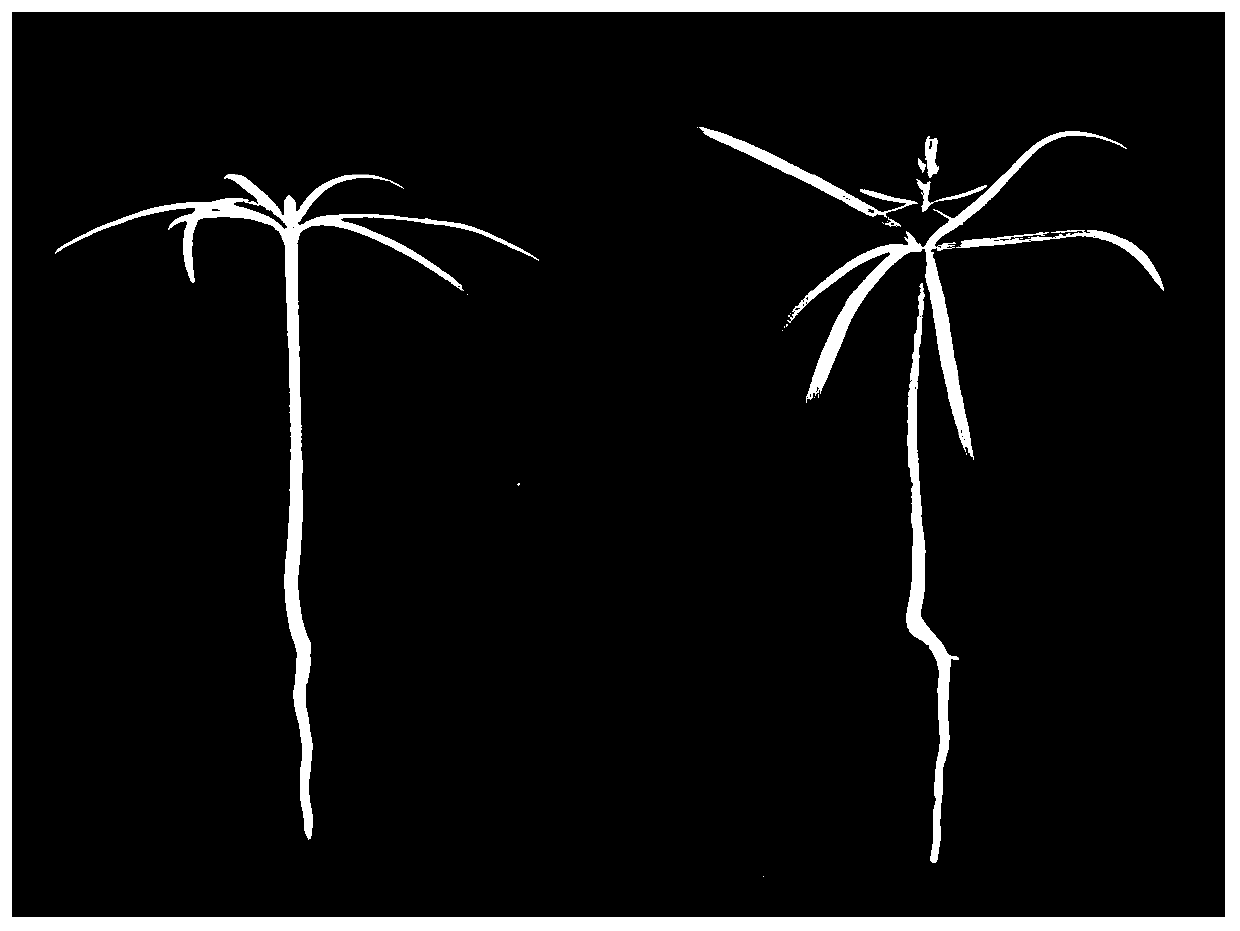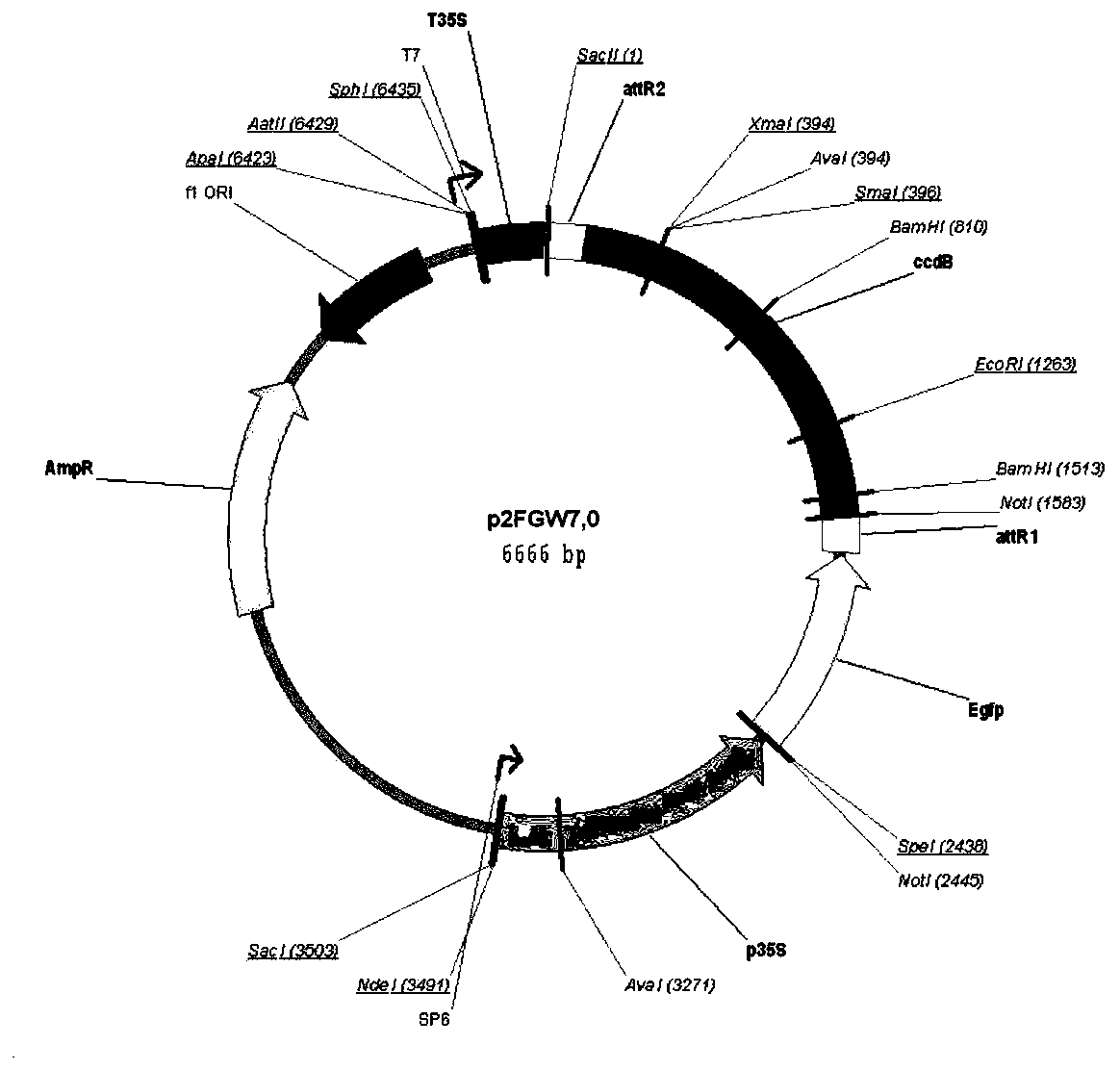Method for separating, purifying and instantaneously and efficiently converting root, stem and leaf protoplasts of taxodium distichum
A protoplast and high-efficiency technology, applied in the field of cell biology and biology, can solve the problems of mechanism research limitations and achieve high plasmid transformation efficiency
- Summary
- Abstract
- Description
- Claims
- Application Information
AI Technical Summary
Problems solved by technology
Method used
Image
Examples
Embodiment 1
[0029] Embodiment 1 prepares the selection of the bald cypress material of protoplast
[0030] 1) collect the bald cypress seeds in the classification garden of Nanjing Zhongshan Botanical Garden in autumn and winter, and place the seeds in a dry and ventilated place to dry naturally;
[0031] 2) Wash the seeds with tap water, soak the seeds in deionized water for 3 weeks, and change the water every 3 days;
[0032] 3) Put the washed seeds in a specific substrate (V (peat soil): V (perlite) = 1: 1), then cover the surface of the seeds with fine soil with a thickness of 1-2 cm, pour water once, and cover with straw , to promote germination by keeping warm and moisturizing;
[0033] 4) After the bald cypress emerges, remove the covering grass, and place the seedlings in a light constant temperature incubator at a temperature of 25±2°C and a strong light of 50 μEm -2 the s -1 , the light time is 16h / d. Water once every 2 days until the seedlings grow a round of complete leave...
Embodiment 2
[0035]Example 2 Separation and purification of different tissue protoplasts
[0036] 1) Optimal enzyme solution system for the separation of protoplasts from different tissues
[0037] The present invention optimizes the protoplast enzymatic hydrolysis system of Taxus thaliana based on the study on the optimization of the separation conditions of the mesophyll protoplasts published by Liao Jiaming et al. in 2010. A gradient is set for every 1% of the cellulase from 1% to 8% vol. Set up a gradient for each 1% of pectinase from 1% to 5% vol, three different tissues of root, stem, and leaf, a total of 120 sets of enzyme solution ratios, observe the enzymolysis situation and count after 5 hours of enzymolysis, and count each time Repeated three times, the results are shown in Table 1-3, showing: when the cellulase is 2% vol, pectinase is 1% vol, the root enzymolysis effect is the best, and the protoplast output is 4.32 × 10 6 / gFW; when cellulase is 6% vol, pectinase is 4% vol, t...
Embodiment 3
[0054] Embodiment 3 Utilizes PEG-mediated method to transform different tissue protoplasts
[0055] Expression of plasmids transformed into protoplasts
[0056] The vector used for transformation in this example is p2FGW7.0, which is a commercial vector, and the vector diagram is as follows figure 2 As shown, the vector contains a constitutive strong expression promoter P35S, which can be highly expressed in protoplasts, contains the green fluorescent protein GFP tag, and can observe the green fluorescent signal under the irradiation of ultraviolet light. In the early stage, the Gateway and TA cloning techniques have been used to fuse the Baldacea tree-Cedar chinensis ThRAP2.1 (GenBank: KY463469) gene and p2FGW7.0 to obtain the target plasmid vector.
[0057] 1) Pipette 10 μL of the target plasmid vector (>10 μg) containing the exogenous gene into a 2 mL round-bottom EP tube;
[0058] 2) Take 100 μL of the protoplasts of the isolated and purified bald cypress roots, stems a...
PUM
 Login to View More
Login to View More Abstract
Description
Claims
Application Information
 Login to View More
Login to View More - R&D
- Intellectual Property
- Life Sciences
- Materials
- Tech Scout
- Unparalleled Data Quality
- Higher Quality Content
- 60% Fewer Hallucinations
Browse by: Latest US Patents, China's latest patents, Technical Efficacy Thesaurus, Application Domain, Technology Topic, Popular Technical Reports.
© 2025 PatSnap. All rights reserved.Legal|Privacy policy|Modern Slavery Act Transparency Statement|Sitemap|About US| Contact US: help@patsnap.com



